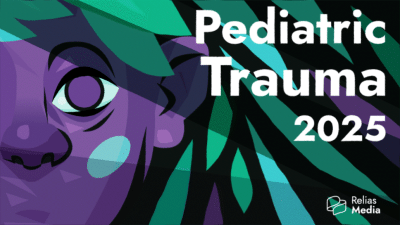The latest installment in an award-winning series, Pediatric Trauma 2025: Quality Care for Serious Pediatric Injuries facilitates excellence by covering the latest scientific information on caring for children who present with traumatic injuries. Perfect for pediatric trauma programs, this book provides 18 hours of pediatric trauma-specific CME/CE credits, meeting the yearly requirements for trauma-certified professionals.
Pediatric Trauma 2025 topics include:
- Differentiating and Managing Pediatric Shock: Review how to identify and manage shock in pediatric patients.
- Pediatric Burn Care: Strategies for Identification and Treatment: Review how to treat burns in pediatric patients.
- Diagnosis and Management of Abscesses: Review techniques to identify abscesses in pediatric patients and consider various treatment options.
- Recognizing, Managing, and Reporting Pediatric Sexual Abuse and Assault: Review warning signs and conversational techniques to employ when suspecting pediatric patients of experiencing sexual abuse and assault.
- Nonaccidental Trauma: Review the indications of nonaccidental trauma in pediatric patients.
- Pediatric Toxic Ingestions: Dangers at Home: Review common sources of toxic ingestion to consider for pediatric patients and consider treatment options.
Features:
- Provides latest evidence on how to best treat children who have experienced a traumatic event
- Includes valuable tables, figures, charts, photographs, and images to support the information
- Easy format for physicians and nurses to earn pediatric trauma-specific continuing education credits
- Provides clinically relevant information on pediatric trauma injuries, challenges, and controversies
Benefits include:
- Discuss conditions that should increase suspicion for traumatic injuries in pediatric patients.
- Describe the various modalities used to identify different traumatic conditions.
- Cite methods of quickly stabilizing and managing pediatric patients.
- Identify possible complications that may occur with traumatic injuries in children.
Follow this link so you can stay up to date!
Contact us for custom reprints and group sales opportunities.

